It’s difficult to imagine so much cultural and biological diversity packed into one small space. The formidable Andes Mountains cut this incredible nation in two: to the east lies the untamed Amazon rainforest, to the west lie lively Pacific beaches with great surf and the famed Galapagos Islands.
Witness indigenous cultures high in the Andes or deep in the Amazon. Stand on the Equator and tour lovely colonial architecture and museums in the lively and modern capital, Quito.
Share the beach with giant tortoises in the Galapagos, or surf and sample fresh seafood at any of the laid-back villages on the coast. The more adventurous can even climb Cotopaxi, the world’s highest active volcano.
However you spend your time, you’ll find that it’s nearly impossible to escape getting caught up in Ecuador’s enchanting allure.
Any time of the year is good to visit Ecuador, but as its separate regions each have their own individual microclimates, certain times are better to visit certain parts.
January to May is best for the Galapagos Islands, since the rest of the year brings rougher seas and cooler weather. Similarly, December to April is high season on the coast, as temperatures are hotter and perfect for beach weather.
As this is also the rainy season, there will be periodic showers, often at night, but it won’t be enough to significantly disturb beachgoing. The rest of year the weather on the coast gets a bit chilly for swimming, but the cooler weather brings whales and dolphins close to shore. This same time is also summer for the highlands, bringing warmer temperatures but also rain, so it’s a trade-off.
Temperature doesn’t vary much in the highlands throughout the year, and in the Oriente one can expect frequent sweltering days over 32 degrees Celsius.
June through September is high season for the highlands as well as the Oriente, where there will be less rain. Those who head to the Oriente from April to July should expect heavy rains, which may derail travel plans.
High Season
June — September
Average temperature
83-67 °C
27–20 °C
Average number of rainy days 1-3
Shoulder Season
October — November
Average temperature
83–69 °F
29–21 °C
Average number of rainy days 2–3
Low Season
December — May
Average temperature
87–74 °F
30–24 °C
Average number of rainy days 10–20
Average temperature
Average number of rainy days
The following links are affiliate links to Amazon.com or other local Amazon web stores - it depends on your location. The listed prices of all items are the US Amazon store prices at the time of publishing. If you are visiting us from outside the USA and there is an analogous item in your local Amazon web store, you'll be redirected there automatically. We do our best to keep all prices and descriptions up to date, but if you find any errors or inaccuracies, don't hesitate to contact us using our feedback page!
Recommended Travel Guides4
City walking10 items
There are many cities and small towns in Ecuador with quaint shops and fantastic architecture. Many love the mountainous capital Quito, home to a great historic section and also the “Middle of the World” monuments and museums marking the equator. Those captivated by cultural heritage should head to charming Cuenca, an Andean city known for its art. Shoppers and those looking to get closer to the Quechua culture should head to Otavalo, a smaller city with a distinct indigenous feel and the best artisan market in the country.
Regardless of where you’re walking, it’s important to bring things like sunscreen. It’s obvious that you’ll need it on the coast and in the stifling Oriente, but most people don’t realize that the sun is strong even cities with cool weather like Quito and Cuenca, since they’re perched high in the Andes and Ecuador straddles the equator.
-
Good daypack
-
Sunglasses
-
Face sunblock
-
Body sunblock
-
Hats
-
Camera (portraits and city views)
-
Portable battery charger (for your phone and camera)
-
Facial cleansing wipes
-
Hand wipes
-
Travel umbrella
Galapagos exploring24 items
The incredibly biodiverse islands made famous by Charles Darwin are Ecuador's greatest gem! With world class scuba diving, surfing, and environmental tourism opportunities, it is a top destination which makes it on many a bucket list. Travel here cannot be done on a whim, however, as flights must be booked and only a certain number of people are permitted on the islands each year.
Galapagos consists of several islands, each with its own attractions. While many people expect the lush vegetation commonly associated with rich biology, much of the islands are more like moonscapes, but this makes them even more unique and photo-worthy! The airport lies on Isla San Cristobal while Isla Espanola is known for its albatross and Isla Santa Cruz houses the renowned Charles Darwin Research Centre as well as Puerto Ayora, the largest town. Along with wildlife, spectacular landscapes and high-quality beaches, there are also several volcanoes on the archipelago, one which erupted as recently as 2015.
You will arrive at the Baltra island, the only island that is not part of the national park, but is a military base and the airport. There are two sets of buses taking people from the airport. One set takes people who are boarding a cruise, the other takes passengers to the Itabaca channel between the island of Balta and the most famous island of Santa Cruz. In any case you may find the following items useful for your Galapagos adventure!
-
Good daypack
-
Hiking hat
-
Long sleeve shirt
-
Long hiking pants
-
Trekking socks
-
Light hiking boots
-
Rain poncho
-
Swimsuit
-
Fleece jacket
-
Body sunblock
-
Face sunblock
-
Lip balm
-
Waterproof bags for money, documents and phone
-
High DEET insect repellent
-
Motion sickness pills and gummies
-
Emesis bags
-
First aid kit
-
Good binocular
-
Torch and headlamp
-
Extra torch batteries
-
Wide angle camera
-
Zoom
This is not a simple question. If photography (especially of wildlife) is or is going to be one of your passions, then you need to invest in a good camera with a good zoom. After searching and investigating a lot about what camera and lens are the best for shooting wildlife on a safari, I finally bought Canon Zoom EF 100-400 mm f/4.5-5.6L IS II, as it allows you not only shoot nice landscapes, but has a good quality of shooting at a distance. Most of the animals will not be posing in front of you; they are shy and will most likely stay far away. Plus, in countries where you need your zoom the most, the weather and light conditions are very tricky. Direct sun rays (savannah) or high humidity (rainforest) are not the easiest issues to handle when shooting. That’s why you need a zoom with a good aperture. Another Canon option I personally considered was zoom EF 70-200 mm f/2.8L IS II USM, as it has better aperture than 100-400, but the zoom is weaker for animals that are too far away. So in short, it’s a very personal question what camera and zoom you should bring on safari. I would rather say if shooting animals is not your main goal, it’s better invest more money in good binoculars and enjoy them in real life.
-
Tripod
-
Monopod
Jungle trekking24 items
A popular and unique background for a trek in Ecuador is the stunning Andean paramo, an eerie, sometimes foggy landscape unlike any other. Any trek in the highlands is automatically more difficult than normal, as altitude in the Andes affects many tourists. Sometimes, an acclimatization period is required so that you can get used to the thin air before embarking.
Favorite destinations for trekking include the cloud forests of Yanacocha, the crater lake at Cuicocha, and the stunning Cajas National Park. If you’re looking for a warmer climate, the dry coastal forests offer fascinating landscapes and uncrowded trails, like the Cordillera del Balsamo. Those interested in longer journeys can hire a guide and hike Ecuador’s Inca Trail, which winds through river valleys and remote highland communities before arriving at Ingapirca, the country’s most famous ruins. Another hike best done with a guide is the four-day Condor Trek, which gives hikers an opportunity to glimpse the famous Andean bird as well as imposing volcanic peaks often shrouded in clouds.
Completely different from the highlands, the Amazon rainforest is a whole different experience which can be an absolutely magical trek. It’s essential to hire a guide for rainforest hikes, since it’s easy to get lost and you don’t want to accidentally encroach on community territory if you don’t have permission. Additionally, don’t forget that the rainforest is a huge ecosystem and every creature, even if it’s very tiny, can protect itself well! For example, leeches are not something you’d want to mess with. While leeches are not the absolute worst experience you could have, they’re still highly unpleasant.
Also, your typical hiking boots are not the best option in the tropical rainforest due its very high humidity. Since normal hiking boots are made of leather, some organisms could find them attractive and move in there. If this happens, then after only a few days of trekking, you’ll basically need to throw them away. When I was preparing for my first jungle experience, I searched far and wide to find the type of boots which would be the best for me. Then, I recalled that the US army had created jungle boots specifically for its soldiers when there was a war in Vietnam. I googled this and ended up buying a pair of these boots. After I did few treks in them, I realized that I had made a very smart choice. The boots are made with an artificial fabric and materials which get dry much quicker than normal hiking boots (which is ideal, considering humidity). They also have very good ankle support and they are tall, so you can wear your leech socks and you won’t be afraid of getting bitten. But of course, light trekking boots with synthetic material would be also a good option, especially if the trek is short.
Other items mentioned below are also musts for jungle trekking. Garbage bags, for example, could be very useful when you have a boat ride somewhere in the depths of the jungle, or if you go during the rainy season. If you put all your bags in separate garbage bags and seal them with a sealing tape, it keeps them from getting wet if it’s raining. I usually use 2-3 garbage bags for each of my bags - a solution which costs much less than a raincover for your bags. Additionally, considering how heavy the rain in the jungles can be, a raincover won’t really help you at all!
-
Good daypack
-
Waterproof bag (might be even better option for rainy season)
-
Anti leech socks (extremely important for rainy season)
-
Jungle boots
-
Light hiking boots
-
Long hiking pants
-
Jungle rain poncho
-
Waterproof bags for camera and documents
-
Good binocular
-
Whistle
-
Torch and headlamp
-
Extra torch batteries
-
Lighter
-
Jungle knife
-
Sealing tape
-
Plastic bags
-
Rope
-
Adjustment to vertical peeing for girls
-
GoPro camera
-
Insect head hat
-
High DEET insect repellent
-
Antiseptic wipes
-
Universal injury relief ointment
-
Waterproof bandage
Mount hiking21 items
Ecuador has some amazing volcanic peaks, including the big three of Cotopaxi, Chimborazo, and Cayambe. All within a stone’s throw of the capital, these glacier-capped peaks are some of the country’s highest and provide great opportunities for trekking as well climbing. More experienced climbers might prefer the more challenging peaks of El Altar or Antisana. Regardless of which peak you want to conquer, it’s necessary to hire a guide when climbing and highly recommended to do so when trekking.
-
Good daypack
-
Good hiking boots
-
Jungle boots
-
Long hiking pants
-
Long sleeve shirt
-
Trekking socks
-
Jungle rain poncho
-
Torch and headlamp
-
Extra torch batteries
-
Softshell jacket
-
Anti leech socks (if rain season)
-
Face sunblock
-
Antiseptic wipes
-
Waterproof bandage
-
Lighter
-
Knife
-
Good binocular
-
Travel towel
-
Swimsuit
-
Light sleeping bag
-
First aid kit
Pack all the essentials and extra items you might need as in the jungle you cannot get any help, so it’s extremely important to be prepared.
Meeting locals3 items
Home to an amazing diversity of indigenous people, Ecuador is a great place to spend time with people of other cultures and see how they live their traditional lives. From the Quechua who inhabit the valleys between the towering Andean peaks which are gods in their cosmovision, to the countless tribes of the Amazon, some which still live in isolation, the country is rich with diversity. Many traditional Quechua communities welcome visitors, as do several Amazonian tribes including the fascinating Achuar, the Huaorani who consider themselves the Amazon’s bravest tribe, the Kichwa - Quechua’s Amazonian counterpart, and the Shuar, who have achieved worldwide fame for their shrunken heads.
There will be lots of kids, so it’s always nice to have small presents for them as well as for the adults, to forge a friendly connection. This is especially true if you are staying for more than a few hours. Don’t forget to wear proper clothing (long sleeve shirts are better than tanks) to show respect to the people. If you stay overnight, it might be a good idea to bring some food and drinks, like alcohol and cigarettes; regarding this issue, you should consult with your guide before you go.
-
Good camera (portraits, object, landscapes)
-
"Polaroid"-type camera
Polaroid-type camera makes immediate pictures to present them as well. This camera is small, relatively cheap and allows you to produce photos immediately. One of the greatest options is by Fuji, as they recently issued a very good Instax model for shooting and getting images immediately.
-
Small presents
Beaching9 items
There are a variety of beaches in Ecuador, each with a different vibe to suit distinct desires. Nightlife revelers will find heaven in Canoa and Montanita, two small surfing towns where partying is the number one priority. Water sports enthusiasts should head to Playas, or to Manta for kitesurfing. Pedernales is known for its beachside waterfalls, while stunning rock formations can be seen in more remote beaches near Jama and Bahia de Caraquez. Wildlife enthusiasts can spot turtles and iguanas in Puerto Villamil or go whale watching near Puerto Lopez. Regardless of which beach you choose to relax on, remember that sunscreen is a must in this hot equatorial country!
-
Body sunblock
-
Face sunblock
-
Sun oil
-
After sun care
-
Moisturizing spray
-
Sunglasses
-
Hats
-
Hand wipes
-
UV protection shirts
 O'Neill UV Sun Protection Men's Basic Skins Long Sleeve Crew Rashguard$24.14
O'Neill UV Sun Protection Men's Basic Skins Long Sleeve Crew Rashguard$24.14 O'Neill UV Sun Protection Men's Basic Skins Tee Rashguard$24.95
O'Neill UV Sun Protection Men's Basic Skins Tee Rashguard$24.95 O'Neill UV Sun Protection Women's Basic Skins Long-Sleeve Rashguard Top$17.96
O'Neill UV Sun Protection Women's Basic Skins Long-Sleeve Rashguard Top$17.96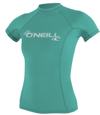 O'Neill UV Sun Protection Women's Basic Skins Short-Sleeve Crew Rashguard Top$17.99
O'Neill UV Sun Protection Women's Basic Skins Short-Sleeve Crew Rashguard Top$17.99 Speedo Kid's UV Long Sleeve Sun Shirt$18.95
Speedo Kid's UV Long Sleeve Sun Shirt$18.95
Surfing10 items
Though not recognized for its surfing like its neighbor Peru, Ecuador has a plethora of unsung surf gems. Surf towns with great Pacific waves dot the entire Ecuadorian coast, but it’s important to know where to go if you’re advanced or a beginner. Party towns like Canoa and Montanita have an abundance of surf schools, but the waves in Montanita can get a bit intense for beginners. Beaches like Bahia de Caraquez and Canoa are best for beginners, whereas further south on the coast is better for those with experience.
For more advanced surfers, Playas has more than 10 great breaks on its nearby coasts. Big city surfers will love Salinas, with its 15 beaches and great nightlife. San Lorenzo is known for its great waves as is Mompiche, and Manta is a hub for the unique sports of windsurfing and kitesurfing.
-
UV protection shirts
 O'Neill UV Sun Protection Men's Basic Skins Long Sleeve Crew Rashguard$24.14
O'Neill UV Sun Protection Men's Basic Skins Long Sleeve Crew Rashguard$24.14 O'Neill UV Sun Protection Men's Basic Skins Tee Rashguard$24.95
O'Neill UV Sun Protection Men's Basic Skins Tee Rashguard$24.95 O'Neill UV Sun Protection Women's Basic Skins Long-Sleeve Rashguard Top$17.96
O'Neill UV Sun Protection Women's Basic Skins Long-Sleeve Rashguard Top$17.96 O'Neill UV Sun Protection Women's Basic Skins Short-Sleeve Crew Rashguard Top$17.99
O'Neill UV Sun Protection Women's Basic Skins Short-Sleeve Crew Rashguard Top$17.99 -
Face sunblock
-
Body sunblock
-
Waterproof bandage
-
Antiseptic wipes (if you have some small wounds, scratches)
-
Universal injury relief ointment
-
After sun care
-
Quadcopter with camera
-
GoPro camera
-
Quadcopter for GoPro
Snorkeling6 items
While the best snorkeling and scuba diving is widely considered to be in the Galapagos, there are some great options on the mainland. Isla del Plata, off the coast near Puerto Lopez, is known as “The Poor Man’s Galapagos” and has fantastic opportunities to go snorkeling, scuba diving, or to combine one of the to with whale watching for a fun-filled day on the water. Snorkelers also enjoy the colorful scenery of Puerto Villamil, while divers like to head to Machalilla National Park.
-
Snorkeling set: fins, mask, tube
-
UV protection shirts
 O'Neill UV Sun Protection Men's Basic Skins Long Sleeve Crew Rashguard$24.14
O'Neill UV Sun Protection Men's Basic Skins Long Sleeve Crew Rashguard$24.14 O'Neill UV Sun Protection Men's Basic Skins Tee Rashguard$24.95
O'Neill UV Sun Protection Men's Basic Skins Tee Rashguard$24.95 O'Neill UV Sun Protection Women's Basic Skins Long-Sleeve Rashguard Top$17.96
O'Neill UV Sun Protection Women's Basic Skins Long-Sleeve Rashguard Top$17.96 O'Neill UV Sun Protection Women's Basic Skins Short-Sleeve Crew Rashguard Top$17.99
O'Neill UV Sun Protection Women's Basic Skins Short-Sleeve Crew Rashguard Top$17.99 Speedo Kid's UV Long Sleeve Sun Shirt$18.95
Speedo Kid's UV Long Sleeve Sun Shirt$18.95 -
GoPro camera
-
GoPro LCD display
-
Hand buoy
-
Anti fog pads
Scuba diving7 item
One of the planet’s premier diving destinations, the water around the Galapagos islands is too cold for coral, but it still boasts an excellent array of colorful marine life including sharks, manta rays, and many endemic species. Wolf Island and Darwin Island provide the most challenging locations, but scuba diving in the Galapagos is challenging in general, since many of the dives are deep and even during the calmer months of November through April, currents are strong. Since the water surrounding these remote islands is notably colder than the water on the Ecuadorian coast, wetsuits are needed. While they can be rented, it is always best to bring your own which you know fits well.
-
Diving wetsuit
-
Snorkeling set: fins, mask, tube
-
GoPro camera
-
GoPro LCD display
-
Red filter (essential for deep blue water)
-
Hand buoy
-
Anti fog pads
Vaсcination7 items
Make sure you are up-to-date on routine vaccines before every trip. These vaccines include the measles-mumps-rubella (MMR) vaccine, diphtheria-tetanus-pertussis vaccine, varicella (chickenpox) vaccine, polio vaccine, and your yearly flu shot. The following vaccination recommendations are taken from the Centers for Disease Control and Prevention (CDC) webpage.
Hepatitis A
Typhoid
Hepatitis B
Japanese Encephalitis
Malaria
Rabies
Yellow fever
First Aid Kit6 items
Of course, Ecuador is a country where you can have some qualified help. However, in some remote areas it will take a while to get proper treatment. Sometimes, not you but some of your traveling buddies might need help. Make sure you have something in advance against the following symptoms:
Wounds, traumas, cuts
Gastro problems like poisoning or heartburn
Allergic reactions on sun burn, bites of insects, unusual food
Fever and cold
Motion sickness
Strong painkillers
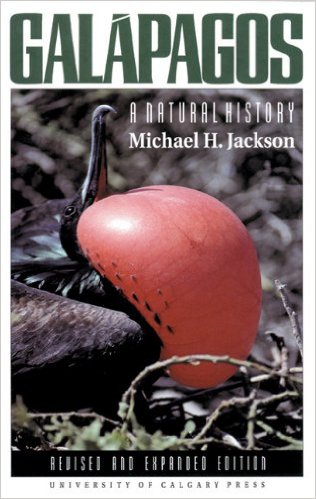
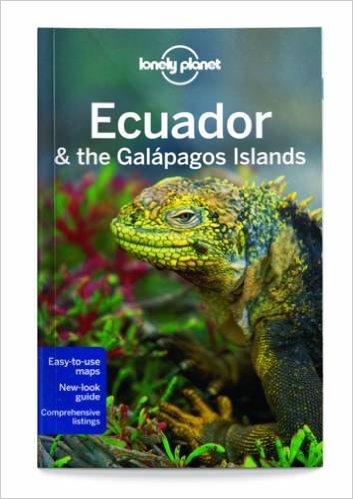
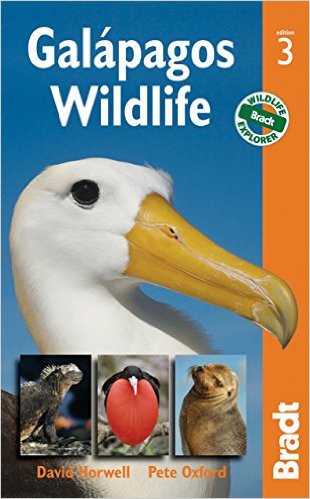
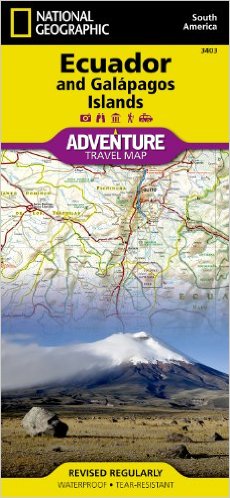
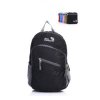


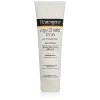
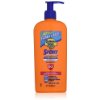


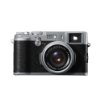

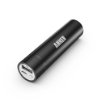






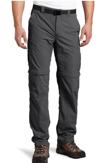
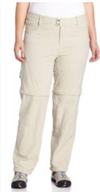
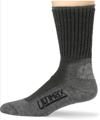



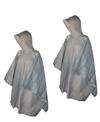
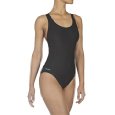
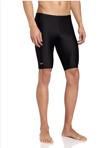


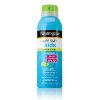
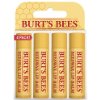

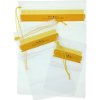
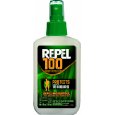
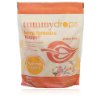



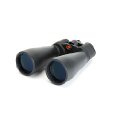
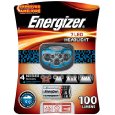


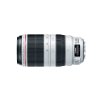
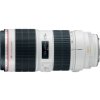

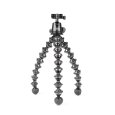


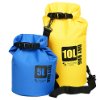
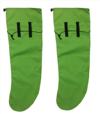




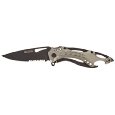
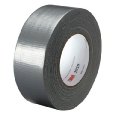
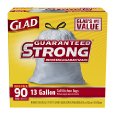

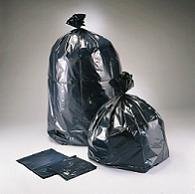


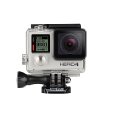
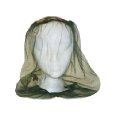
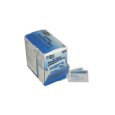

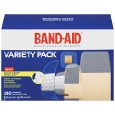


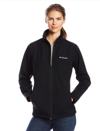
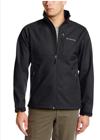


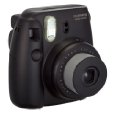







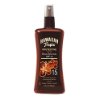
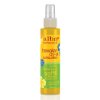
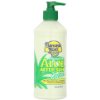
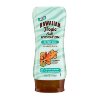
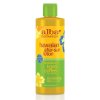
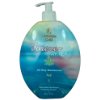
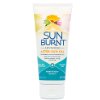


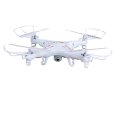
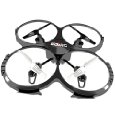
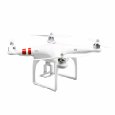
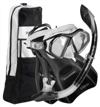
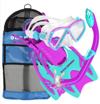

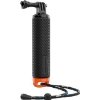

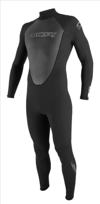
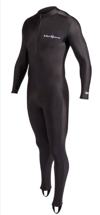
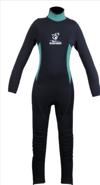

Like this packing list
Like VacayKit